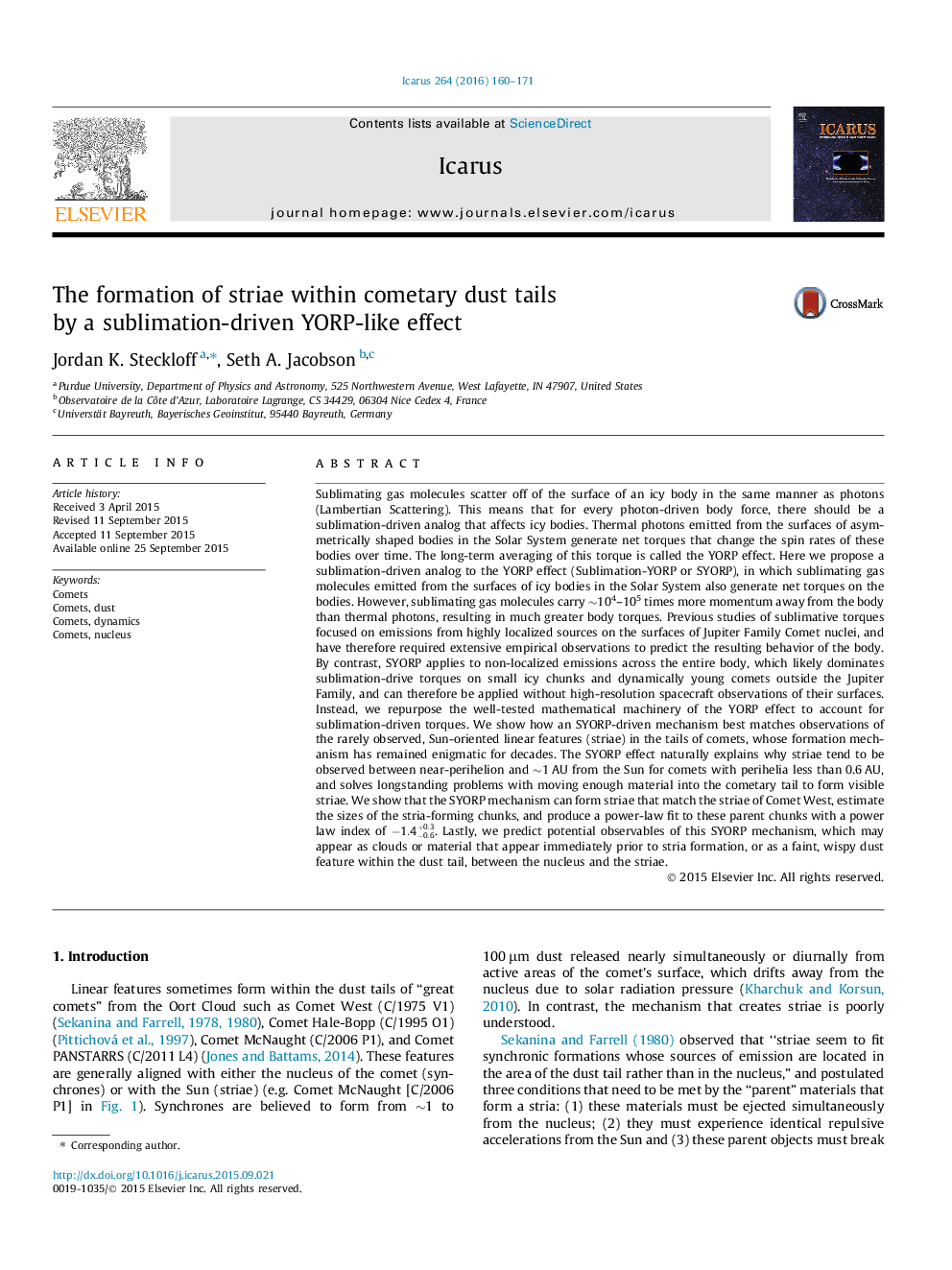| Article ID | Journal | Published Year | Pages | File Type |
|---|---|---|---|---|
| 8135901 | Icarus | 2016 | 12 Pages |
Abstract
Sublimating gas molecules scatter off of the surface of an icy body in the same manner as photons (Lambertian Scattering). This means that for every photon-driven body force, there should be a sublimation-driven analog that affects icy bodies. Thermal photons emitted from the surfaces of asymmetrically shaped bodies in the Solar System generate net torques that change the spin rates of these bodies over time. The long-term averaging of this torque is called the YORP effect. Here we propose a sublimation-driven analog to the YORP effect (Sublimation-YORP or SYORP), in which sublimating gas molecules emitted from the surfaces of icy bodies in the Solar System also generate net torques on the bodies. However, sublimating gas molecules carry â¼104-105 times more momentum away from the body than thermal photons, resulting in much greater body torques. Previous studies of sublimative torques focused on emissions from highly localized sources on the surfaces of Jupiter Family Comet nuclei, and have therefore required extensive empirical observations to predict the resulting behavior of the body. By contrast, SYORP applies to non-localized emissions across the entire body, which likely dominates sublimation-drive torques on small icy chunks and dynamically young comets outside the Jupiter Family, and can therefore be applied without high-resolution spacecraft observations of their surfaces. Instead, we repurpose the well-tested mathematical machinery of the YORP effect to account for sublimation-driven torques. We show how an SYORP-driven mechanism best matches observations of the rarely observed, Sun-oriented linear features (striae) in the tails of comets, whose formation mechanism has remained enigmatic for decades. The SYORP effect naturally explains why striae tend to be observed between near-perihelion and â¼1Â AU from the Sun for comets with perihelia less than 0.6Â AU, and solves longstanding problems with moving enough material into the cometary tail to form visible striae. We show that the SYORP mechanism can form striae that match the striae of Comet West, estimate the sizes of the stria-forming chunks, and produce a power-law fit to these parent chunks with a power law index of -1.4-0.6+0.3. Lastly, we predict potential observables of this SYORP mechanism, which may appear as clouds or material that appear immediately prior to stria formation, or as a faint, wispy dust feature within the dust tail, between the nucleus and the striae.
Related Topics
Physical Sciences and Engineering
Earth and Planetary Sciences
Space and Planetary Science
Authors
Jordan K. Steckloff, Seth A. Jacobson,
